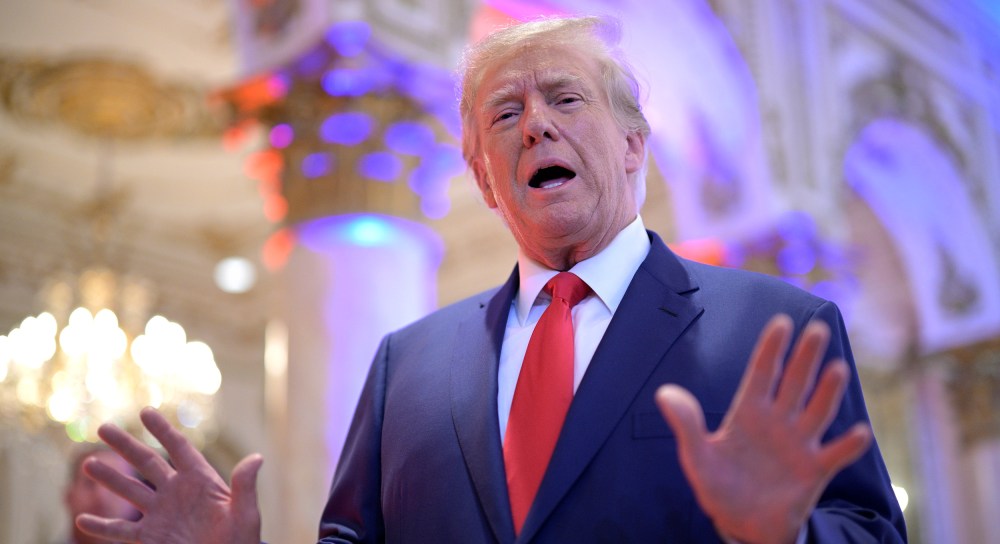Donald Trump is already at it again. Only a few weeks after the former president kicked off his latest presidential campaign, he dove headlong into controversy, hosting dinner at his Mar-a-Lago home with the antisemitism-spewing Ye and the white supremacist activist Nick Fuentes as his guests.
Trump released at least three statements trying to downplay the occasion after reporting on it emerged.
Trump is also already deploying a familiar — and dangerous — strategy for justifying his association with prominent bigots. Using a paper-thin layer of plausible deniability, he’s forcing mainstream media to trip up over the story of his alleged intentions while signaling his own continuing commitment to illiberal white nationalist extremism.
Understanding Trump’s Mar-a-Lago dinner is fairly straightforward. Just weeks after Ye made hateful, threatening comments toward Jews (“I’m going death con 3 On JEWISH PEOPLE”) Trump invited him to a meal. One of the attendees was Fuentes, who, among other things, was an attendee at the 2017 white supremacist Unite the Right rally in Virginia, denies the Holocaust and advocates for the racist great replacement theory. Trump chose to break bread with these people, and it’s not hard to see why: They all share overlapping visions for what ails the world, and how it would be improved. (Trump reportedly said Fuentes “gets me” after Fuentes encouraged him to ad-lib more in his speeches; it should not be hard to guess what it is about the impulsive Trump that Fuentes likes.)

But Trump released at least three statements trying to downplay the occasion after reporting on it emerged. In one statement, he claimed that it was actually an act of charity for the unwell, wherein he tried to “help a seriously troubled man, who just happens to be black, Ye (Kanye West), who has been decimated in his business and virtually everything else.” In another, he said Ye did not express any antisemitism at the dinner. And in multiple statements he claimed that he did not know who Fuentes was and that Fuentes only came at Ye’s invitation. Notably, Trump did not express horror or condemnation of Fuentes’ views — which would’ve been made clear to him once he started seeing blowback — or condemn Ye’s recent comments.
Trump’s framing technique is an attempt at having his cake and eating it, too. He wants to downplay controversy but declines to condemn the substantive reasons it swirls around these kinds of meetings. This serves as a wink to the kinds of extremists who make up Trump’s militant, extremist base. Remember when Trump refused to condemn the Proud Boys, instead telling them to “Stand back and stand by,” or when he refused to condemn former Ku Klux Klan grand wizard David Duke’s endorsement by insisting he didn’t know who Duke was — even as it was made clear to him? This is the same game.
The bigger picture is that Trump associates with and refuses to condemn white supremacists because he shares values with them and sees them as an important part of his path to power
Part of the reason this strategy works on some level is due to the structural constraints in hard news reporting. A hard news reporter is obligated by journalistic ethics and conventions to describe Trump’s own comments on an incident, including what may be false claims from him about his intentions or knowledge. The inclusion of his attempts at misdirection can create a constant sense of confusion or doubt in a layman reading about what happened. This also allows Trump’s supporters to downplay or obscure the meaning of what happened, by providing them with a ready defense.












